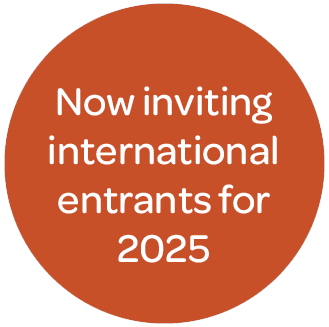Why You Need to Localize Your Marketing & How to Do It
GWI – 2 July 2019
Source GlobalWebIndex blog
Return on investment is the end goal – every time.
Brands are constantly striving to find a fail-safe formula for achieving it. But in marketing and advertising, one simple truth remains:
The more targeted your content, the more it resonates.
This is why most brands rely on regional data to reveal specific consumerinsights that drive hyper-targeted content.
Fortunately for them, the formula for creating a customer-centric, localized marketing strategy is simpler than it’s ever been, and it starts with local data.
- Local data + detailed segmentation = tailored targeting.
- Tailored targeting + creative thinking = impactful marketing.
We explain what makes local data such an important asset for achieving ROI, and how brands can use it to propel their marketing strategies forward.
Get more from your ad spendThe problem: mistargeting and ad waste.
No two markets are the same. For this reason, a one-size-fits-all approach will lead to miss-targeting and wasted spend.
People express unique consumer patterns in different regions for a number of social, cultural, political and economic reasons.
The challenge for brands is taking this into account and identifying the channels that present the ideal degree of ad exposure.
The solution: local behavioral data.
Regional data sets allow you to analyze what devices people are using to engage with content in your sector, and on which channels, with pinpoint accuracy.
Use case: understanding brand discovery in Baja, Mexico.
Here’s a hypothetical example.
A fast-growing U.S. restaurant chain has expanded into different regions of Mexico and is looking to increase footfall with a targeted awareness campaign.
To do this, they need information on how and where specific regions discover brands.
Here’s what they uncovered about consumers in Baja, Mexico:
- 41% discover brands via social media ads. That’s 47% more likely than global consumers.
- They’re 52% more likely than the average consumer to discover new brands via product brochures and catalogs.
- They’re 12% less likely to discover a new brand via endorsements by celebrities or well-known individuals.
By focusing in on a specific region, the company can ensure its awareness content will reach people where they’re most receptive to new brands.
In this case, a mix of social media adverting and traditional promotion would be more effective, while celebrity endorsements would earn limited response.
But this isn’t enough to ensure consumers will take action.
The next step is fine-tuning your message.
Make your message hit the right noteThe problem: campaign scrutiny.
Today more than ever, campaigns are under the microscope.
In the past, launching a ‘bad’ campaign would’ve had little impact on a brand’s health. Today, the interconnectivity of modern consumers and their heightened expectations mean brand reputation is less stable.
It pays to build strong consumer relationships through relatable messaging that speaks directly to consumer interests.
The solution: Regional consumer opinions.
Local data, often combined with social listening, is the vehicle driving a message that resonates.
Looking beyond behavioral and demographic information identifies local trends and consumer motivations and perceptions to reach individuals at their core.
Use case: understanding brand advocacy in Baja, Mexico.
Continuing with the restaurant example, having identified where best to place their ads to raise awareness, let’s say they need to decipher what motivates consumers in Baja to promote their favorite brand.
Robust survey data reveals:
- 44% say receiving great customer service motivates them to promote their favorite brand. That’s 34% more likely than consumers globally.
- 50% of consumers say rewards motivate them. That’s 18% more likely than consumers globally.
Using this information, the brand can craft their content to align with consumer demands.
In this case, knowing locals value promotional offers and customer service reveals key themes the content should tap into.
Case study: shaping local productsMobily launched in 2005 and has become known as the fastest-growing mobile communications operator in the Middle East and North Africa.
The challengeTo expand its position within the Saudi Arabian market, Mobily wanted to foster more meaningful relationships with a highly-connected local subgroup: expats.
Their media agency, Initiative MENA – operating under IPG Mediabrands – were tasked with deciphering the best strategy for achieving this.
The action“We wanted to give our recommendation on how Mobily should be targeting different nationalities with the best packages for them. But at the same time we wanted to base it on solid research and insight to validate our whole approach”, says Mazher, Mazher Abidi, Head of Strategy at Initiative MENA.
To do so, the agency used local data in the GlobalWebIndex platform to prove and disprove some preconceptions, uncovering key insights into expat mobile usage in Saudi Arabia.
Theories they disproved:
- The best way to attract expats is through international dialing offers.
- Their top communication medium is international voice dialing.
- Smartphone owners are high earners.
- Most expats sit within the lowest income brackets.
Theories they proved:
- All demographics (regardless of income) are smartphone owners.
- Income levels of smartphone users are far more varied than anticipated.
- Their top communication mediums are wifi, messaging and VoIP using VPNs.
- Income levels of expat workers vary widely (even sitting within the top 25% of earners)
“We identified who they are and how they live their lives – from their behaviors to their touchpoints”, says Mazher.
The local data revealed smartphone users were active across a larger number of expat nationalities in Saudi Arabia, and across a much wider range of income groups than originally thought.
Initiative’s observations led to Mobily completely rethinking their targeting and messaging strategy.
It gave them far more insight into the audience, shattering the long-held myth that IDD dialing and traditional voice calls are the way forward for expats.
Instead data-led packages would be far more beneficial to them.
Read the full case study here.
Advertisement
Get the latest MRS news
Our newsletters cover the latest MRS events, policy updates and research news.














